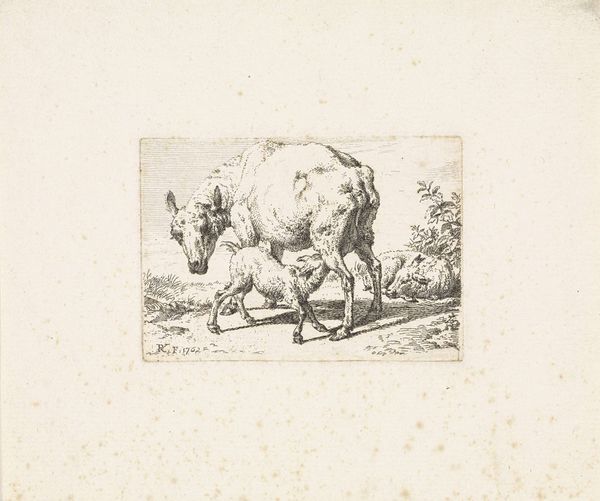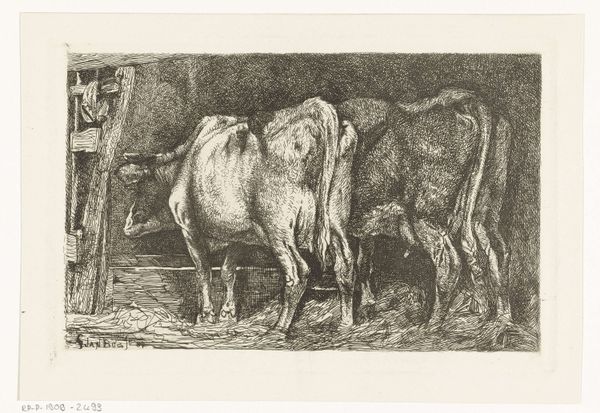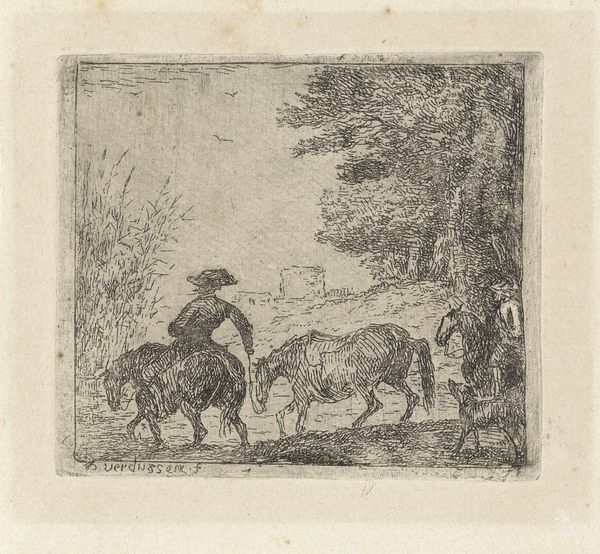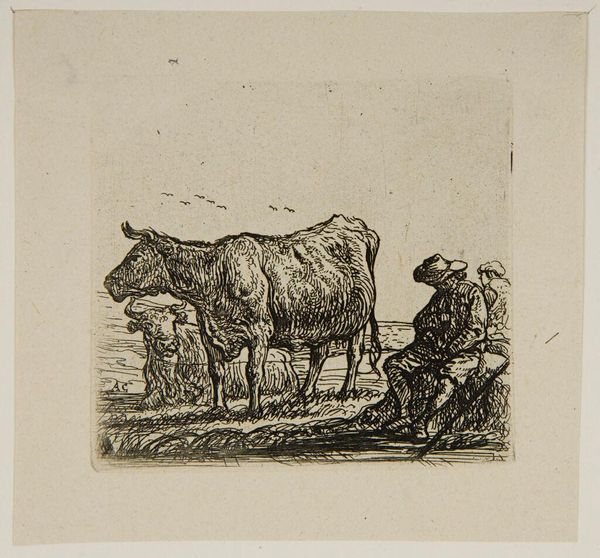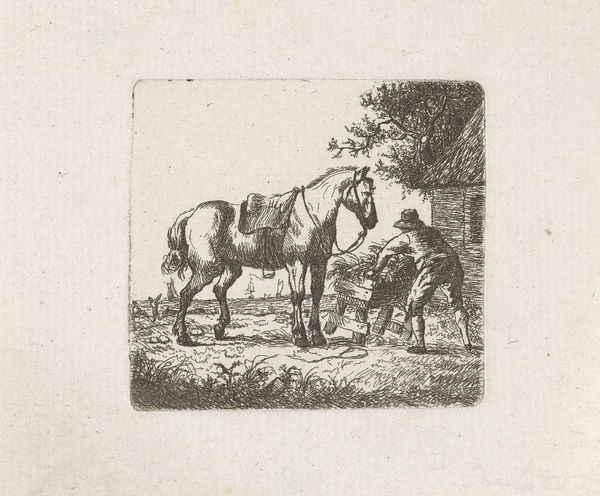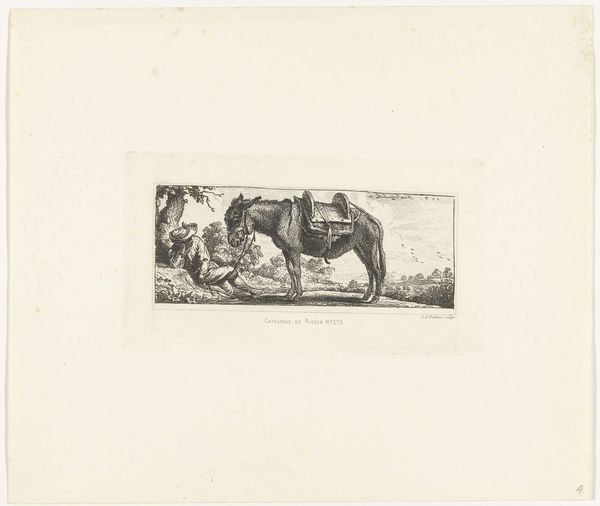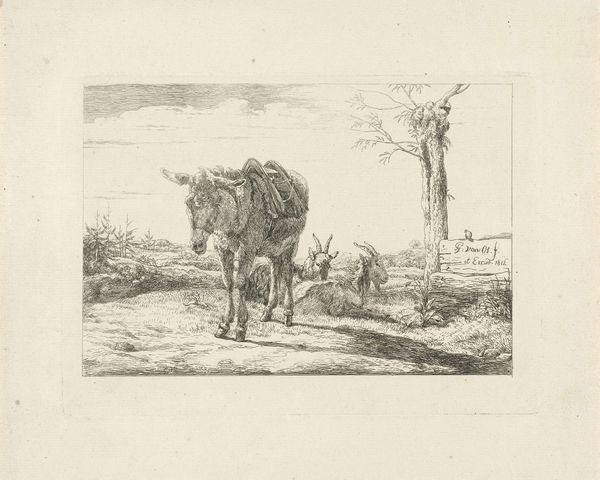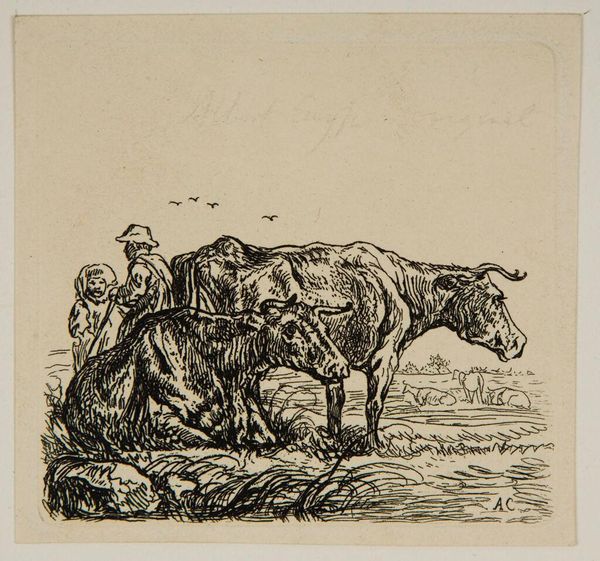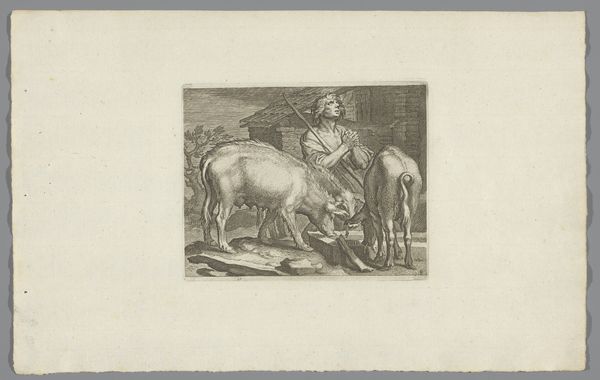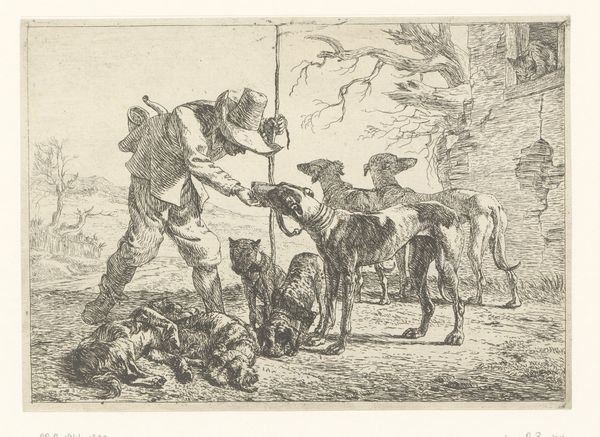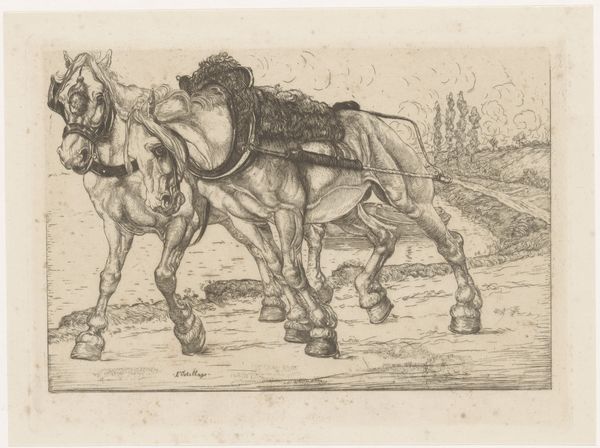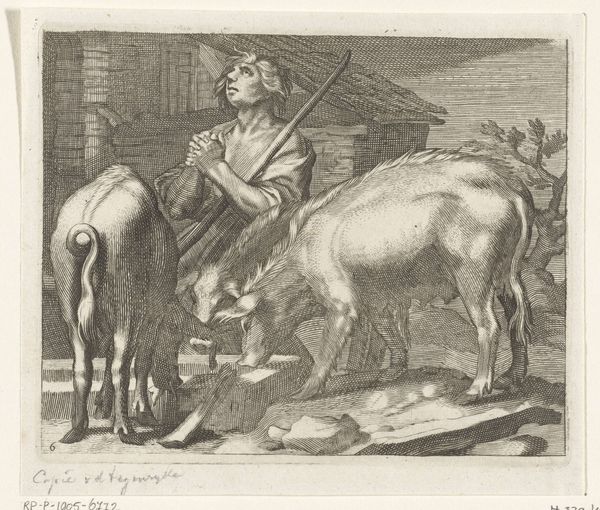
etching
#
baroque
#
etching
#
old engraving style
#
landscape
#
figuration
#
genre-painting
Dimensions: height 109 mm, width 142 mm
Copyright: Rijks Museum: Open Domain
Curator: Here we have an etching dating from between 1611 and 1650, currently held in the Rijksmuseum collection. The piece is titled "Verloren zoon als varkenshoeder met varkens bij trog", or "Prodigal Son as a Swineherd with Pigs by a Trough." Editor: My first impression is one of stark realism, but tinged with almost unbearable sorrow. The sharp lines of the etching style contribute to a sense of desperation. Curator: Absolutely. Etchings of this period, particularly in the Netherlands, often served to disseminate moral stories to a wider audience. Consider the social implications of broadcasting such tales in a readily accessible medium. Editor: The narrative is key. We're witnessing a crucial point in the parable of the Prodigal Son. Stripped of everything, he's reduced to this state, tending to swine – an incredibly debasing occupation, particularly within the religious context of the time. Curator: Precisely. The son’s prayer-like gesture reinforces this point, contrasting sharply with his earlier arrogance and hedonism. The swine, though coarsely rendered, emphasize the depths of his degradation. Think about the symbolism—he’s lower than low. Editor: It also highlights societal structures and power dynamics. Who controlled the means of art production and distribution? Whose stories were being told and whose experiences were excluded? Curator: Excellent questions. Moreover, consider the economic factors at play. Prints were a booming industry; workshops churned out these images for profit. So, while a moral lesson is clear, commercial interests shaped artistic output. Editor: Yes, and this piece makes me think about what visual storytelling is considered acceptable now. I appreciate that the starkness challenges comfortable viewing. The image’s somber quality serves as a strong critique against social inequality and our roles in systems that oppress. Curator: This image effectively bridges a significant biblical tale with contemporary commentary on poverty, class and societal norms, thus challenging us even now. Editor: Looking at this now I notice new parallels with the modern precarity that shapes work and labour policies. Curator: Indeed, a powerful piece that continues to resonate beyond its immediate historical context.
Comments
No comments
Be the first to comment and join the conversation on the ultimate creative platform.
